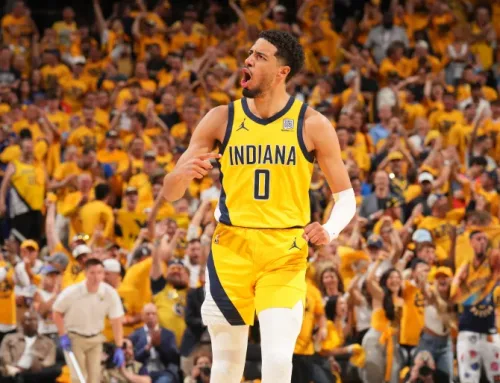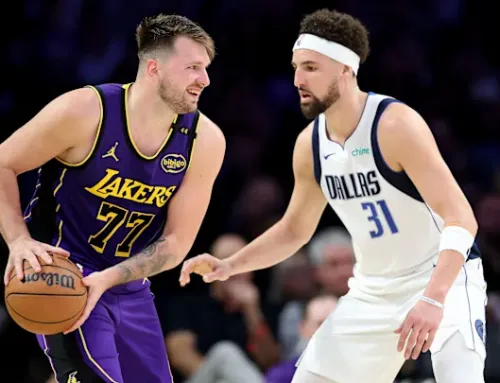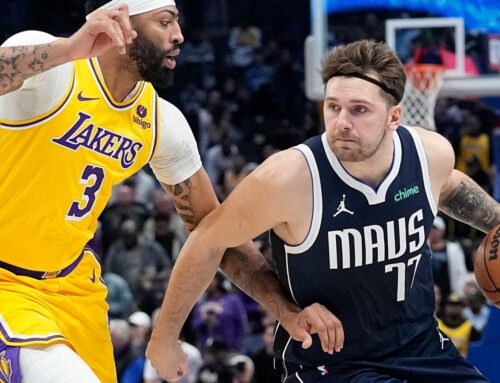Do 10-Game Samples Matter for Team’s Title Aspirations?
By: Avi Tyagi
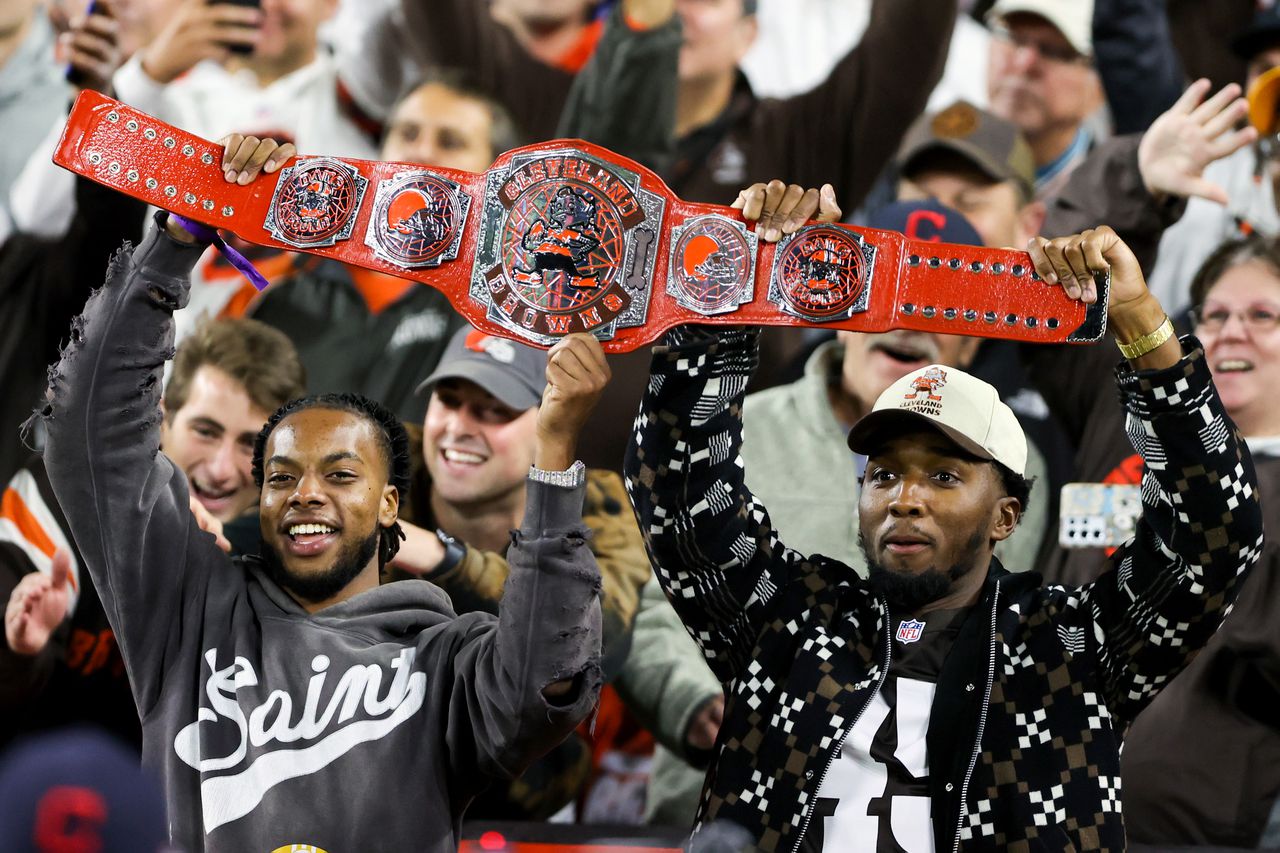
So, every year, as we run through the early part of the season, the discourse climate enters overreaction season and new takes sprint out of the blocks. Sample size concerns reign over every conversation and questions emerge about the merits of many statistics this early into the new campaign. As a result, the first few games are still considered to be of minimal value as teams round into form and gel together. As we approach the 10-game mark, I decided to check that theory myself. Could the first 10 games of the NBA season serve as a benchmark for the quality of eventual NBA champions and finalists?
Cleaning the Glass data goes back to the ‘03-04 season and easily allows anyone to check any stretches of performance for each NBA team. Their data filters out garbage time and end-of-quarters data to display a scoring differential meant to be more representative of team quality. All I did was look at the record and net rating through the first 10 games for every NBA Champion and runner-up over that duration. Immediately, a few features stood out:
1. Of the 38 teams in that data set (19 champions and 19 runner ups), only 4 finished with a record of 5-5 or worse in the first 10. Those would be your ‘04-05 Pistons, ‘14-15 Cavs, ‘17-18 Cavs, and last season’s Celtics. To narrow it down further, the ‘04-05 Pistons and ‘17-18 Cavs are the only two teams to make an NBA Finals and start their season with a negative net rating in their first 10 games. These might be two special cases. Let’s inspect the ‘04-05 Pistons first (and the ‘04-05 Suns for comparative purposes as well). The 2004-05 Suns (losers to the eventual champion Spurs in a 5-game series in the Western Conference Finals) went 62-20 to finish as the league’s best record. Their first 10 contests: an 8-2 record with a +12.5 net rating. Not too shabby. The Pistons started 5-5 with a -0.4 rating. A sluggish 7-8 start with a -0.8 net rating was brushed aside as Detroit tore off on a 47-20 run and a 6.4 net rating over the rest of the season, closely in line with the Suns who went 49-18 with a +6.6 net rating over the same stretch. Detroit made the Finals and took the Spurs to a tough 7 game series. The reason for that peculiar slow start from the otherwise potent Pistons? Yes, that would be the Malice in the Palace. Notably, Ben Wallace was suspended for 6 of their first 14 games due to the timing of the infamous incident and missed 8 matches overall over that span. In other words, scrutinizing the Pistons first 10 games would be extremely faulty for this exercise. They are an anomaly. After contemplating of replacing their spot with the Suns in the dataset, ultimately, I decided to focus on the Pistons record with Wallace and Billups (himself serving a one-game suspension) back in the lineup. In their first 10-game sample which excluded the Malice in the Palace game itself and the ensuing games with the suspensions, Detroit went 6-4 with a +4.3 Cleaning the Glass net rating.
2. The ‘17-18 Rockets were a 65-win juggernaut who started 7-3 (with a +5.7 net rating) and sparred for 7 games with the eventual dynastic champs. In sharp contrast, the Cavs are the only team to start worse than .500 from their first 10, going 4-6 with a (brace for impact) -6.8 net rating over that span. Those Cavs also got tossed aside in a famous sweep by the Warriors. For our exercise, the 2018 Houston Rockets are more archetypal NBA Finals’ contestants than the representatives from the East were.
3. The two Warriors teams that suffered major injuries in the playoffs, stand out amongst the crowd of NBA runner ups. None of the other silver medalists finished with 9 wins or more from their first 10 or with a net rating of +15 or better over that stretch. When looking for prospective NBA champions however, one of these Warriors’ iterations enjoys a sturdier profile in comparison with its actual champion counterpart. While the 2016 loss did feature an unprecedented suspension and some key injuries (a hobbled Steph from an early playoff slip and a series ending Bogut injury) for the runner-up, it was not completely unnatural in scale or scope. Injuries to key supporting characters and a missed game or two from a star over the course of a series have been a staple feature of NBA Finals. Kevin Love was hobbled throughout most of that series. Just the year prior, an acclimating Kevin Love and a budding Kyrie Irving played a combined 44 minutes in the Finals. What is often regarded as a famous self-generated flameout understates the impressive tactical coaching and substitutional successes, the fiery scoring of Kyrie Irving, and the feather in the cap of LeBron, a historical icon at the peak of his powers. The well-documented injuries for the ‘19 Warriors are another matter entirely. The 2019 Dubs had an MVP-level HOFer in his peak missing for all but 12 minutes of the series and lost a second HOFer to devastating injury amid a keenly contested game 6. For the purpose of this exercise, I exchanged the Raptors’ and Warriors’ 2019 credentials to more accurately classify the resumes of a finalist and a champion, respectively.
4. Since the ’07-08 Celtics formed (what many consider to be) the first modern super-team, every NBA season has had multiple teams with a Cleaning the Glass net rating of +10 or better through the first 10 games. That is, until the 2019-20 season. In both the ‘19-20 and ‘20-21 seasons, considered to be more open races due to the collapse of super-teams, no teams finished with a +10 or higher net rating through their first 10. Considering how prominent the narratives of parity and of opportunities for less dominant, but deeper rosters to compete were throughout the off-season and the preseason leading up to each of those campaigns, it is astounding how snugly those sync with the data.
Analyzing our data, the 18 champions won 7.7 games on average with a +8.66 net rating. The 18 runner ups won 7 games and had an average net rating of +6.67. If we substitute the 2019 Raptors with their Warriors counterparts as a more representative point of comparison for champions, replace the ‘04-05 Pistons’ first 10 games with the sample of their first 10 games that were not influenced by the Malice in the Palace, and swap the ’17-18 Cavaliers for the Rockets as finalists for our model, our champions win an average of 7.7 games with a +9.32 net rating in their first 10 matches while our finalists win 7.2 games with a +7.14 net rating. Those are extremely dominant showings that effectively helped predict the Warriors’ championship potential last season.
Here is what I wrote at this time last year:
Now let’s examine the 10-game sample sets for each team this season. Jazz, Warriors, Heat, Bulls, and 76ers fans are likely thrilled by the findings of this data. Each of these 5 ensembles stand out with outstanding net ratings above +7.5 in their first 10 and records befitting of NBA champions, or at least NBA finalists. In all likelihood, just by comparing with the precedents established from the data, one of these 5 teams will likely be NBA champions, potentially facing off against another member of this coveted list.
To embark on yet another tangent, let’s examine the Warriors in particular, with their 9-1 start and +13 net rating (per Cleaning the Glass). Here is the list of all the other teams with a +12.5 or higher rating: the ‘04-05 Suns, ‘05-06 Cavs and Pistons (the latter taking down the former in a tough 7-game series only to have face eventual champion Miami, fresh from a gentleman’s sweep, in the ECF), the ‘07-08 Celtics(champs), ‘08-09 Lakers(champs), ‘09-10 Celtics (finalists), the ‘11-12 76ers (featuring Jrue Holiday and Andre Iguodala), the ‘13-14 Warriors (yes, you read that correctly; this team started 7-3, but finished as the 6 seed), the ’13-14 Spurs (champs), the ‘14-15 Rockets, the ’14-15 Warriors (champs), the one-of-a-kind ’15-16 Warriors, the ‘16-17 Clippers, the ‘18-19 Bucks, and the ’18-19 Warriors. Of our prestigious 15-team list, 11 teams made the conference finals. Of the four that missed that benchmark, two teams had players whom management felt underwhelmed (young prospects with the 76ers and players in their primes with the Clippers). To convert their talent pool into a sustained contention window, one team started the Process to rebuild into an eventual contender, while the other began slowly accumulating assets to establish themselves as an attractive destination and build the current Kawhi-and-PG-centric roster. The other two rosters that were each unable to win two playoff series were young teams with superstars (LeBron and Steph) that proceeded to make the NBA Finals the following year. To say the start of the season looks promising for the Warriors may be a fair statement.
Back to the current league. 4 teams (Milwaukee, Cleveland, Phoenix, and Toronto) had a CtG net rating of +7.2 or better within their first 10 games (the average net rating for eventual finalists). Within that quartet, the Cavs and Bucks (even without Middleton) had net ratings above +9.3 (the average net rating for eventual champions). Considering the talents of the dynamic young Cleveland core and the improved play of the complementary talent around Milwaukee’s Big 3, it would not be surprising for these two teams to match up as Eastern Conference finalists, with the winner the favorite for the title. The baseline for most NBA finalists or champions at the beginning of the campaign is a 6-4 record with at least a +2.8 net rating. Other than the 4 standouts previously mentioned, loosening our restrictions in this fashion adds the Celtics, Mavericks, Jazz, Pelicans, Hawks, Grizzlies, and Nuggets to the list of potential finalist candidates. Embracing 4 favorites and 7 potential outsiders, as measured by our prescribed criterion, will likely set expectations more in line with each team’s potential than preconceived notions often do. This season has a similar number of favorites and outsiders to most NBA previous seasons. Even if we accommodate for a potential outcome such as last season’s Celtics going on a rampage through the second half of the season in route to the Finals, very few additional teams fit the bill. Those Celtics still had a +1.2 net rating with a 4-6 record. Searching for any other teams this season with at least a +1 net rating only nets us the Bulls and Timberwolves. To establish themselves as contenders, we might need to see some activity at the trade deadline and a dominant finish to the season behind major defensive improvements if either side plans to emulate the 14-15 Cavs or last term’s Celtics.
In short, while a strong start might not be a guarantee of at least an NBA Finals appearance, it is typically the bar that needs to be cleared to enter the conversation. For fans of teams outside this exclusive list, this is not to say your team might be incapable of making the Finals. Nor is this to say that all 11 teams mentioned in this list will assuredly perform better this season than your team does. After all, the Mavericks, Bucks, and Grizzlies would not have qualified for our criteria last season. The poor net ratings for those rosters were more indicative of their lack of depth last season. Much of their high-level play was concentrated in a few players and that proved to be a determining factor in each of their playoff series losses. Last year’s Lakers, whom many media members picked to win the title, were perhaps most representative of this concept. Their -2.8 net rating in the first 10 games was emblematic of the supporting cast concerns that came to define their season. Searching for parallels this season, the Warriors and Clippers stand out as sore thumbs. The departures of Damion Lee, Nemanja Bjelica, Otto Porter, and GP2 have exposed the weaker underbelly of the unseasoned bench. Their young prospects simply have not been up to the task, despite the public insistence of the organization that they can become pillars of the new Warriors era. Even Poole, a foundational piece to the previous title run, has cratered this season, a disastrous development for a second unit that could not afford it. His defensive effort has been poorer, an issue amplified by the bench configurations less equipped to cover for him, while his on-ball scoring has suffered immensely in lineups without any other threats to distract defensive attention. On-ball defenders can play press coverage with the knowledge that the backside help will step in to cover when needed. For a young, developing player with a slighter build, that defensive focus has nullified many of Poole’s instant advantages. It might be hard to break out of this slump until he features in more effective lineups which compel help defenders to stay home. Fundamentally, the two timelines model is reaching its first obstacle. A Warriors team searching for the next great center talent (who could be complementary off the bat and also display the potential to eventually exceed a secondary role) forwent the opportunity to select Onyeka Okongwu within the upper reaches of the 2020 NBA draft. The vision was meritorious, but the execution is being audited. This trade deadline will be pivotal for the franchise and will illuminate the approach the organization feels most comfortable implementing. For the Clippers, discordant and sluggish offensive sets have meshed with a roster-wide shooting slump to help produce this outcome. A roster considered 12-deep and filled to the brim with a diverse set of versatile wings that could sub in situationally has had only 6 players perform to a (charitably) acceptable level. The fouling is frequent, the shot quality is abhorrent, and the stagnant passing has limited their ability to generate paint touches or open assisted jumpers. Most importantly, the compromised fitness of their best player should ring alarm bells for their outlook this season. In total, the findings simply indicate that mediocrity at the start of the season typically serves as a red flag to wisely take heavily into account and correspondingly, quickly alter the expectations for the team.
